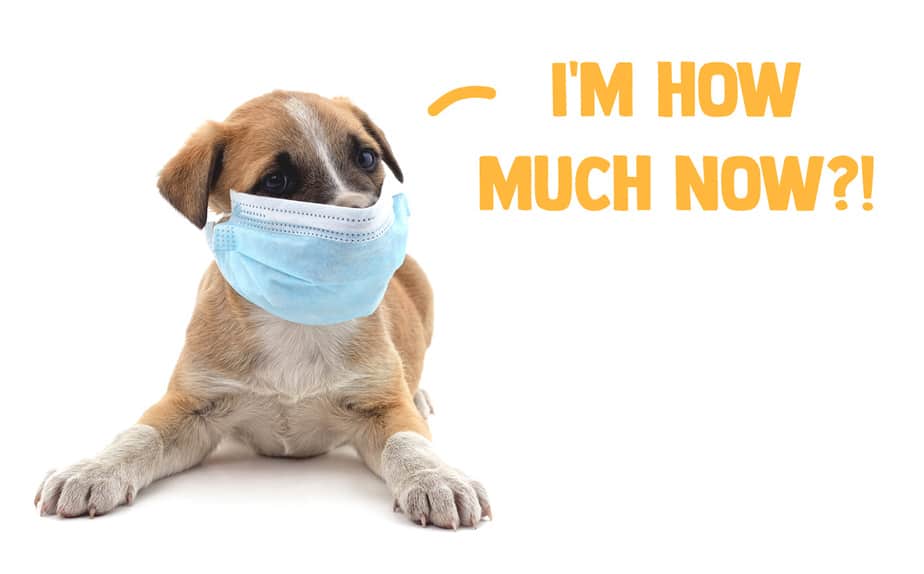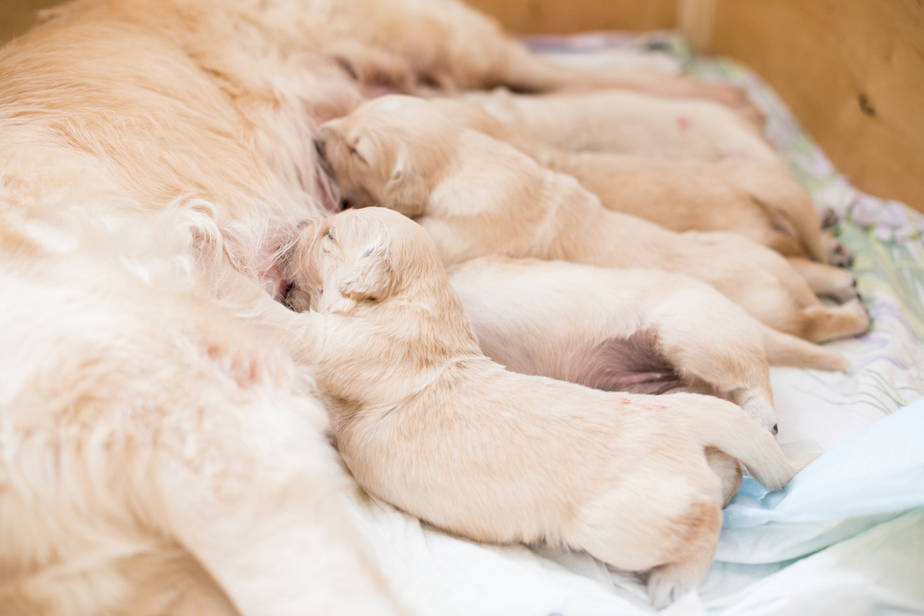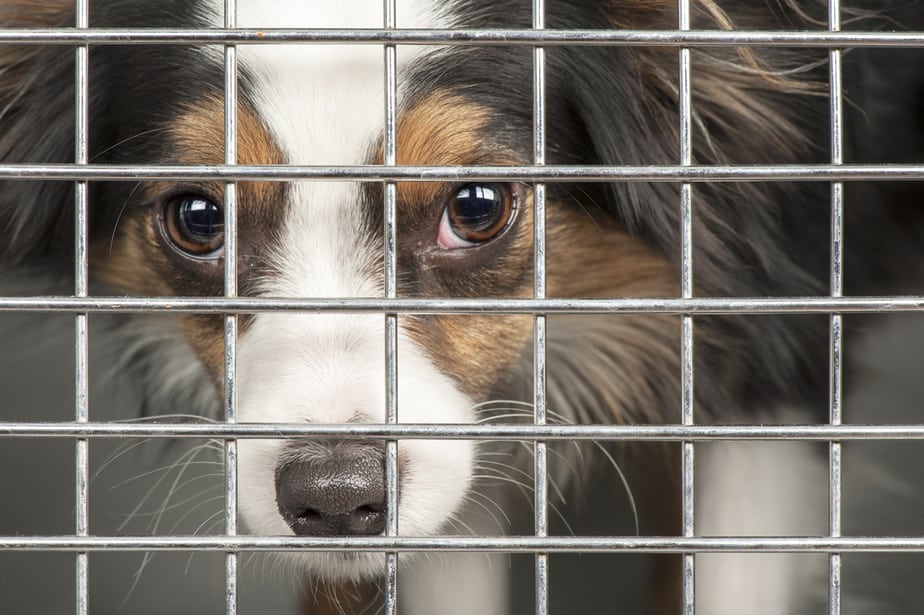Getting a new puppy is a highlight of anyone’s life, and while emotionally they fill up your heart, financially, they empty your pockets.
Puppies are more expensive now than ever before. Demand has skyrocketed since Covid-19, and with stricter laws on puppy mills, a well-bred puppy is now an extravagant expense.
Let’s get to the bottom of why they’re so expensive, and ways in which you can get a puppy that isn’t going to cost you a fortune.
The reason for expensive puppies
Demand for puppies has increased due to Covid-19 and has pushed up prices. A puppy from a reputable breeder is expensive as breeding puppies correctly is a costly pursuit, and the cost is passed down to the buyer. A rare or sought-after breed will always fetch a premium due to supply and demand.

Covid-19 effect on puppy prices
The most obvious reason puppies are so dang expensive right now is due to Covid-19. The pandemic has created a flood of interest for puppies, and demand is pushing up prices.
There’s reports some puppy breeders have tripled the price of their puppies. The demand has been enormous, as stay at home workers look for comfort from a new four-legged family member.
This means there’s huge demand for puppies from reputable dog breeders.
Some buyers are also looking to make extra money by buying pure bred dogs for breeding purposes to cash in on this puppy gold rush.
And many would-be opportunists have gone into breeding dogs to increase their income. Unfortunately, these pop-up backyard breeders aren’t all doing what they should to provide a quality puppy from a well-bred lineage.
Often times, they’re simply running a puppy mill and raising dogs in filth, churning them out and selling them for profit.
If you don’t know where the puppy is coming from, or haven’t first-hand viewed the breeder, then it’s best to steer well clear.
It’s also possible that you might be looking at a puppy that doesn’t exist at all! Scammers are aplenty right now, trying to sell puppies online with no proof they actually exist.
So be sure to see the pup firsthand or have it on very good authority that they’re coming from a reliable breeder.
Stick to quality breeders – you may have to wait and pay more, but it’ll be worth it in the long run, as the dog will have less chance of future health concerns.
Use this resource to find puppies in the USA, and then be sure to check their credentials under the Breeder Profile.
https://marketplace.akc.org/search-puppies
Breeding is expensive
A quality puppy from a reputable breeder is going to be expensive, especially if they’re a more expensive breed of dog, such as a French Bulldog or Chow Chow.
The best breeders aren’t making big money, because if done correctly, it’s difficult to earn a healthy income once fees are accounted for.
Reputable breeders are also not upping their puppy output, as this can start affecting the health of mommy dog!
Here is an example of breaking down of the cost of preparing mom for a litter:
- Thyroid Panel $195
- Vet Exam $39
- Medical Waste Fee $5
- OFA Recording Fee $15
- CAER Exam $70
- OFA Recording Fee $12
- Degenerative Myelopathy Test $65
- Orthopedic X-rays for Hips $207
- Orthopedic X-rays for Elbows $103
- Patellar Luxation Exam $20
- Vet Exam $26
- Pre-anesthetic Blood Work $75
- IV Catheter Set-Up $26
- Sedation for X-rays and Reversing Agent $87
- OFA Recording Fee for Hips and Elbows $40
- OFA Recording Fee for Patellas $15
TOTAL: $1,000
- Pre-natal Veterinary care
- Ultrasound to confirm pregnancy
- X-Ray to estimate litter number
TOTAL: $500
Plus, any unexpected whelping veterinarian fees.
If a C-Section is required, then add another $600 to $1,500 per litter. This is a common occurrence for English Bulldogs. With only 3 to 4 expected puppies in a litter, that’s a possible additional $375 per puppy alone.
Other examinations may also be required depending upon the breed. A Golden Retriever for example should be tested for hip dysplasia, elbow dysplasia, CERF eye exams, as well as cardiac evaluations.
There are also fees a breeder incurs for the new puppies, including:
- Eye-screening
- Veterinary checkup to rule out congenital defects
- Puppy vaccinations
- Registration fees
- Microchipping
- Genetic testing
- Plus, a take home bag of information and essentials.
All these costs are then taken into account when pricing a puppy for sale.
Many veterinarian fees have also gone up above these estimates, as their demand has spiked. Which needs to be accounted for into the final sale price.
There is also the factor of the breeder’s time, and the hours involved add up quickly. A breeder can spend 60-hours in a fortnight caring for puppies and mom. And that’s 60-hours that aren’t spent in another occupation.
This above point alone makes breeding dogs a passion, not a gold mine (As long as it’s done correctly).
As you can see, proper breeding practices add up, which flows onto the new owner who will be buying the puppy.

Why are some puppy breeds so expensive?
There are few factors in determining the expense of certain dog breeds. The main factor is supply and demand. French Bulldogs have shot up in value over the last decade as their popularity rose.
Another factor is some breeds have small litters, and when mom can only have a litter every 18-months, then there aren’t many pups to sell. A French Bulldog for instance only has on average 3 puppies per litter.
Here are a few more reasons:
- Few people breed that type of dog
- A celebrity is showing off a breed and its spiking public interest
- Cost of papers involved with purebred dogs can be expensive
- Some breeds are intrinsically difficult to breed

Price list of popular and expensive dog breeds
When seeing these prices, consider this a guide only. Prices vary widely within the same breed depending upon area in the United States, quality of breed lineage, and breeders chosen prices.
| Breed | Price |
|---|---|
| Samoyed | $4,000 – $14,000 |
| French Bulldog | $3,000 – $8,000 |
| Chow Chow | $7,000 – $11,000 |
| Tibetan Mastiff | $7,000 – $10,000 |
| Rottweiler | $4,000 – $9,000 |
| Canadian Eskimo Dog | $7,000 – $9,000 |
| Afghan Hound | $5000 – $7000 |
| Akita | $2,000 – $6,000 |
| Golden Retriever | $3,000 – $4,000 |
| Cavapoo | $2,500 – $3,500 |
| Beagle | $1,500 – $2,500 |
| German Shepherd | $1,500 – $7,000 |
| English Bulldog | $2,000 – $5,000 |
Costs after purchasing a puppy
Once you buy your puppy, you’re not yet done opening your wallet just yet.
Vets aren’t cheap, and there can be 101 reasons why you might need to visit the vet at any given day.
Say your puppy gets ear mites, or infected anal glands, or a grass seed stuck in their paw, or a broken tooth.
An unexpected expense to the vet should be accounted for, in case it happens. And at some point in your dog’s life it surely will!
Your puppy will also have mandatory vaccinations. That’s $75-$100 x 3.
There is the option of pet insurance and over the course of your dog’s life it could well be worth it. That’s another $40 per/month.
To the already growing cost, add some, if not all, of the following list to the shopping cart:
- Toys
- Bed
- Crate
- Gate
- Pen
- Bowls
- Brush
- Leash
- Collar
- Treats
- Blankets
- Car restraint
- And of course, the big one, FOOD!
And one more thing we left off the list in puppy expenses: the damage that they cause. You know those expensive pumps you just bought. Well, they’re now covered in drool and bite marks.
Are you finding it difficult to breathe yet? Well, take a moment, because after all these expenses, they’re still definitely worth it!
Just be prepared that your puppy may end up costing you thousands of dollars. On average, expect a dog to cost $380 to $1,170 per year to own.
The alternative to an expensive puppy
Of course there is an alternative to purchasing an expensive puppy from a reputable breeder: Rescue shelters.
There’s a certain level of stigma associated with rescues. Some people think they’re damaged goods. In reality, many dogs in rescue shelters are there due to no fault in the dog themselves.
Some reasons why a dog is abandoned include:
- Economic reasons – can no longer afford the additional expense
- The dog is too energetic and doesn’t suit the lifestyle of previous owner/s
- Change of mind on dog ownership – some people don’t realize the effort involved in raising a puppy
- Health concerns
- Divorce
- New baby in the house
From this list you can surmise there are plenty of dogs in shelters who have had no history of unwanted behaviors.
Covid-19 has definitely shaken up rescue shelters around the country. While some are inundated with people who are giving up their dogs and puppies, others are seeing mass evacuations as stay at home workers adopt dogs.
It’s a see-saw effect right now. As more puppies are purchased than ever before, and unstable economic conditions, there’s an influx of dogs into rescue, and the reverse of people seeking a more affordable solution to dog ownership.

Benefit of getting a rescue:
- Saving money – adoption fees range between $200 to $800 depending on age and breed of dog
- Vaccinations are already done
- They are likely already fixed
- Combatting inhumane puppy mills
- Already sprayed or neutered
- You can try them out at home before committing
- May already be trained
- Save a life
Use these two sites to find a rescue dog in your area:
https://theshelterpetproject.org/
Adopt before they go to the shelter
Another option is to keep an ear out for people who have found having a puppy all too difficult. However, if you do find someone who wants to give up their pup, then you should still be sure the breed is a good fit for you and your situation. If you live in an apartment, then an Australian Shepherd isn’t going to be suitable.
Ask breeders
Leave your name with breeders and say you’re interested in returns. Yes, people do return their puppy to the breeder. There can be a variety of reasons why someone might return a puppy. Living situations change, and sometimes people just realize the time it takes to raise a puppy is more than they can handle.
You may be able to get a discount if the puppy has aged in between the purchase date and return date.




